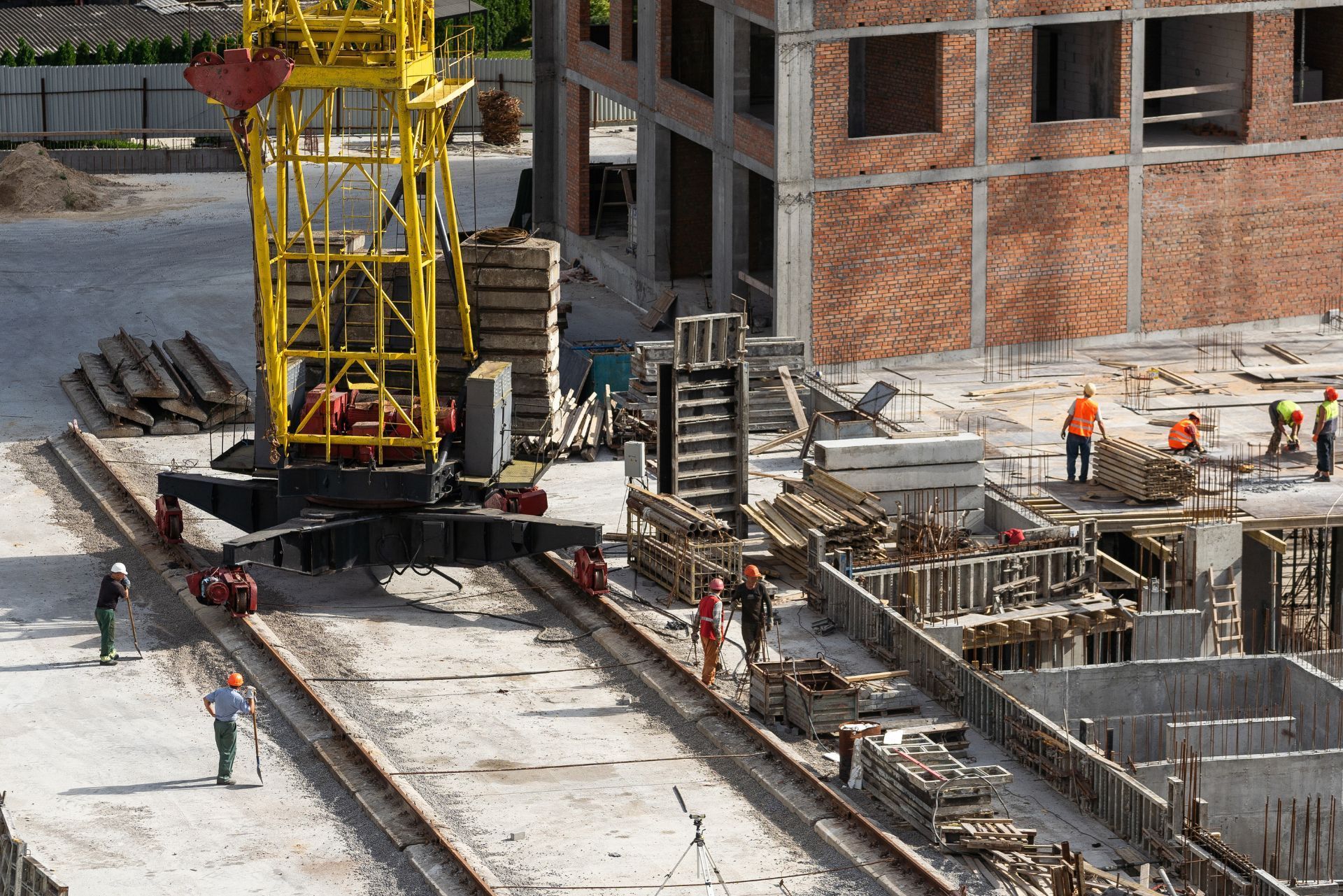In the realm of construction and real estate, the Arizona Release of Lien Bond serves as a vital instrument for property owners and contractors alike. This legal tool facilitates the removal of a lien from a property, allowing for smoother transactions and clearer titles. Understanding the intricacies of this bond is essential for anyone involved in property development or ownership in Arizona. This article delves into the essential aspects of the Arizona Release of Lien Bond, providing a comprehensive overview.
What is a Release of Lien Bond?
A Release of Lien Bond is a financial instrument that allows property owners to remove a mechanic's lien from their property. Mechanic's liens are typically filed by contractors, subcontractors, or suppliers who have not been paid for services or materials provided. By securing a Release of Lien Bond, property owners can effectively clear their titles, enabling them to sell or refinance their property without encumbrances.
The bond acts as a guarantee to the lien claimant that they will be compensated for their work. Once the bond is in place, the lien is released, and the property owner can proceed with their plans without the cloud of a lien hanging over their property.
How Does a Release of Lien Bond Work?
The process of obtaining a Release of Lien Bond involves several key steps. Initially, the property owner must identify the lien claimants and the amount owed. This amount will typically include the original debt plus any interest or penalties. Once the total is determined, the property owner can approach a surety company to secure the bond.
The surety company will assess the risk involved and may require collateral or a premium to issue the bond. Once the bond is issued, it is filed with the appropriate county office, effectively releasing the lien on the property. The lien claimant can then pursue the bond for payment if the debt remains unpaid.
Benefits of Using a Release of Lien Bond
Utilizing a Release of Lien Bond offers several advantages for property owners. First and foremost, it provides a swift resolution to lien disputes, allowing property owners to regain control over their assets. This is particularly crucial in the fast-paced real estate market where delays can lead to significant financial losses.
Additionally, the bond serves as a protective measure for property owners, ensuring that they are not held hostage by unpaid debts. It allows for the continuation of construction projects or property sales without the burden of unresolved liens. Furthermore, it can enhance the property’s marketability, as potential buyers are more likely to be interested in a property free of liens.
Moreover, the use of a Release of Lien Bond can foster better relationships between property owners and contractors. By providing a mechanism for resolving payment disputes, it encourages prompt payment and can lead to more collaborative working environments. Contractors may feel more secure in their dealings, knowing that there is a structured process for addressing unpaid debts, which can ultimately lead to higher quality work and a more seamless project completion.
In addition, the financial implications of securing a Release of Lien Bond can be quite favorable. While there is an upfront cost associated with obtaining the bond, it can be significantly less than the potential costs of litigation or delays caused by unresolved liens. This proactive approach not only saves time and money but also provides peace of mind for property owners, allowing them to focus on their projects rather than on legal battles.

Legal Framework Surrounding Release of Lien Bonds in Arizona
The legal landscape governing Release of Lien Bonds in Arizona is primarily outlined in the Arizona Revised Statutes. Understanding these laws is crucial for both property owners and contractors to navigate the complexities of lien claims and bond issuance.
Arizona law stipulates that a property owner can file for a Release of Lien Bond within a specific timeframe after a lien has been recorded. This timeframe is generally within 60 days of the lien being filed. Failure to act within this period may result in complications that could hinder the bond process. Moreover, it’s important for property owners to be aware of the potential repercussions of not addressing a lien promptly, as liens can lead to significant financial and legal challenges, including the possibility of foreclosure.
Key Statutes to Know
Several statutes are particularly relevant when dealing with Release of Lien Bonds in Arizona. One of the most important is Arizona Revised Statutes § 33-1002, which outlines the process for filing a bond to release a lien. This statute specifies the requirements for the bond, including the amount and the necessary documentation. It is essential for property owners to gather all pertinent information, such as the original contract and any correspondence with the lien claimant, to ensure a smooth filing process.
Another critical statute is Arizona Revised Statutes § 33-1003, which details the rights and obligations of both the property owner and the lien claimant once a bond is filed. Understanding these statutes can help mitigate risks and ensure compliance with state laws. For instance, the lien claimant has the right to pursue the bond for payment if the underlying debt remains unpaid, emphasizing the importance of resolving any disputes amicably and promptly.
Common Misconceptions About Release of Lien Bonds
There are several misconceptions surrounding Release of Lien Bonds that can lead to confusion among property owners. One common myth is that obtaining a bond eliminates the need to pay the lien claimant. In reality, the bond serves as a guarantee for payment, but the property owner is still responsible for settling the underlying debt. This misunderstanding can lead to financial strain if property owners mistakenly believe they are absolved of their obligations once a bond is secured.
Another misconception is that the bond process is overly complicated and time-consuming. While it does require some paperwork and coordination with a surety company, many find that the benefits of securing a bond far outweigh the initial effort. With the right guidance, property owners can navigate the process smoothly and efficiently. Additionally, many surety companies offer resources and support to help property owners understand the requirements and expedite the process, making it more accessible than it may initially seem.
Furthermore, it is essential to recognize that the bond itself can serve as a valuable tool in protecting the property owner's interests. By effectively managing the lien process through a Release of Lien Bond, property owners can maintain their ability to sell or refinance their property without the encumbrance of a lien, thereby preserving their financial flexibility and investment value. Understanding these nuances can empower property owners to make informed decisions and take proactive steps in managing their real estate assets.
Steps to Obtain a Release of Lien Bond in Arizona
Securing a Release of Lien Bond involves a series of steps that property owners must follow to ensure a successful outcome. Here’s a breakdown of the process:
1. Assess the Lien
The first step in obtaining a Release of Lien Bond is to thoroughly assess the lien. Property owners should review the lien documents to understand the amount owed, the parties involved, and the nature of the claim. This assessment will provide clarity on the next steps and help in negotiations with the lien claimant. It’s also beneficial to consult with a legal professional who specializes in real estate or construction law, as they can provide insights into the validity of the lien and potential defenses against it. Understanding the specific grounds for the lien can empower property owners in their discussions and may even lead to a resolution without needing to proceed with the bond process.
2. Contact a Surety Company
Once the lien has been assessed, the property owner should reach out to a reputable surety company. It’s advisable to shop around and compare rates, as different companies may offer varying premiums and terms. The surety company will require documentation related to the lien and the property to evaluate the risk and determine the bond amount. Additionally, property owners should inquire about the company’s experience with Release of Lien Bonds specifically, as this expertise can greatly influence the efficiency and effectiveness of the bond issuance. A well-established surety company can often provide valuable guidance throughout the process, helping to navigate any complexities that arise.
3. Complete the Bond Application
After selecting a surety company, the property owner will need to complete a bond application. This application typically requires personal and financial information, as well as details about the lien. The surety company may also conduct a credit check to assess the property owner’s financial stability. It’s crucial for the applicant to be thorough and accurate in this application, as any discrepancies could lead to delays or denial of the bond. Furthermore, property owners should prepare to provide additional documentation, such as proof of ownership, any previous communications with the lien claimant, and evidence of payments made towards the lien, if applicable.
Once the application is submitted, the surety company will review it and either approve or deny the bond request based on their assessment. If approved, the property owner will receive the bond, which must then be filed with the appropriate court or agency to officially release the lien. This step is essential, as it formalizes the bond's role in satisfying the lien claim and allows the property owner to proceed with any planned transactions or improvements without the cloud of the lien hanging over them.
Costs Associated with Release of Lien Bonds
Understanding the costs associated with a Release of Lien Bond is crucial for property owners. The primary cost is the bond premium, which is typically a percentage of the total bond amount. This percentage can vary based on several factors, including the property owner’s creditworthiness and the surety company’s policies.
Factors Influencing Bond Premiums
Several factors can influence the cost of a Release of Lien Bond. These include the financial stability of the property owner, the amount of the lien, and the risk assessment conducted by the surety company. Generally, property owners with better credit scores and financial histories will secure lower premiums.
Additionally, the nature of the lien and the relationship between the property owner and the lien claimant can also impact the cost. If the lien is contested or involves complex legal issues, the bond premium may be higher due to the increased risk. For instance, liens resulting from disputes over construction contracts or unpaid invoices can lead to a more thorough evaluation by the surety company, thus affecting the overall cost.
Additional Costs to Consider
In addition to the bond premium, property owners should be aware of other potential costs. These may include legal fees if the lien claimant disputes the bond or if litigation becomes necessary. Additionally, there may be filing fees associated with submitting the bond to the county office. It’s also important to consider the administrative costs that may arise during the process of obtaining the bond, such as the costs of gathering necessary documentation and the time spent negotiating terms with the surety company.
Moreover, property owners should factor in the potential for increased premiums if the bond needs to be renewed or if the lien remains unresolved for an extended period. This can lead to additional financial strain, especially if the property owner is not prepared for ongoing expenses. Understanding these costs in advance can help property owners budget effectively and avoid unexpected financial burdens as they navigate the complexities of lien release processes.

Implications of Not Securing a Release of Lien Bond
Choosing not to secure a Release of Lien Bond can have significant implications for property owners. One of the most immediate consequences is the inability to sell or refinance the property until the lien is resolved. This can lead to financial strain, especially if the property owner is relying on the sale for liquidity. In many cases, property owners find themselves in a precarious situation where they are unable to access the equity in their property, which can hinder their ability to invest in new opportunities or cover unexpected expenses.
Potential Legal Consequences
Failure to address a lien can also lead to legal consequences. Lien claimants may initiate foreclosure proceedings to recover the debt, which can result in the loss of the property. Additionally, unresolved liens can tarnish a property owner’s credit rating, making it more difficult to secure loans or financing in the future. This negative impact on credit can extend beyond the immediate financial implications, affecting the owner’s ability to rent or lease other properties, as landlords often conduct credit checks before agreeing to rental agreements.
Impact on Future Projects
For property owners involved in ongoing or future construction projects, unresolved liens can create complications. Contractors and suppliers may be hesitant to work on a property with a lien, fearing that they too will face payment issues. This can lead to delays and increased costs, ultimately impacting the property owner’s bottom line. Moreover, the presence of a lien may deter potential investors or partners from collaborating on future projects, as they may perceive the financial instability as a risk. This can stifle growth and innovation, leaving the property owner at a disadvantage in a competitive market.
Reputational Risks
Beyond the financial and legal ramifications, failing to secure a Release of Lien Bond can also pose reputational risks for property owners. Word of unresolved liens can spread within the local business community, leading to a loss of trust among contractors, suppliers, and even clients. This erosion of trust can make it challenging to build new relationships or maintain existing ones, which are often crucial for long-term success in real estate and construction. Furthermore, negative publicity surrounding a property owner’s financial troubles can affect their standing in the community, potentially impacting future business endeavors.
Emotional and Psychological Effects
The stress of dealing with unresolved liens can also take a toll on property owners on a personal level. The anxiety of potential foreclosure, coupled with the financial strain of not being able to access funds tied up in the property, can lead to significant emotional distress. Property owners may find themselves in a constant state of worry, which can affect their overall well-being and decision-making abilities. This psychological burden can also extend to family members, creating a ripple effect that impacts relationships and quality of life.
Conclusion
The Arizona Release of Lien Bond is an essential tool for property owners navigating the complexities of mechanic's liens. By understanding the process, legal framework, and associated costs, property owners can make informed decisions that protect their investments. Securing a Release of Lien Bond not only clears titles but also facilitates smoother transactions and enhances marketability.
As with any legal or financial matter, it is advisable for property owners to consult with professionals, including attorneys and surety agents, to ensure compliance with state laws and to navigate the bond process effectively. By taking proactive steps, property owners can safeguard their interests and mitigate the risks associated with mechanic's liens.
Article By: Ryan Spalding
Licensed Insurance Agent & Bond Specialist
Contact Us

